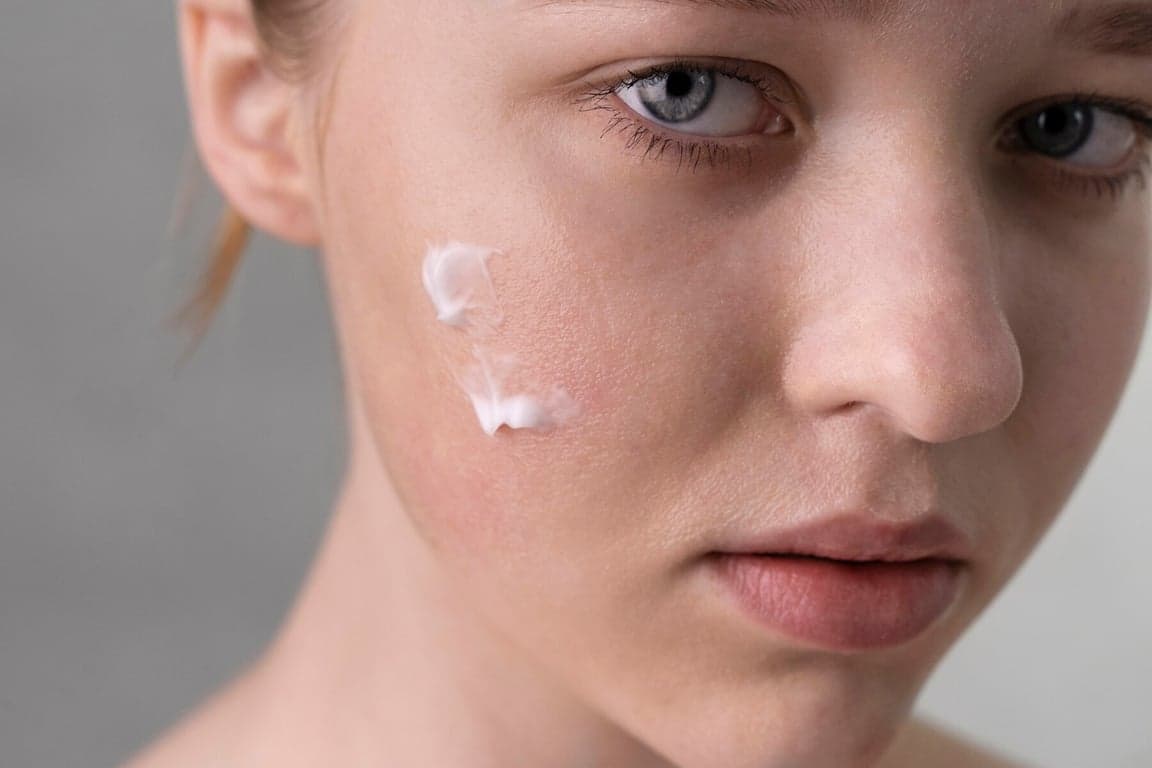Sunscreen
While not often discussed, the sun emits many UV rays that have detrimental effects to the skin. Sunscreen plays a vital role in protecting the skin against these harmful consequences, but many people still don’t use it. Sun protection and UV damage is more complex than it may appear, often with underlying issues that come to light in the future.

Purposes of Sunscreen
One of the most important benefits of sunscreen application is decreasing the chances of being sunburnt. To some, a sunburn is nothing more than an uncomfortable but trivial matter that happens as a result of a casual day at the beach. But in reality, the consequences of sunburning extend far greater than just visible redness. When UV comes into contact with skin cells, the body tries to compensate for it by producing melanin, which is a skin pigment that offers protection against UV. The melanin darkens that skin and subsequently results in a tan.
However, due to genetic differences, some people don’t produce as much melanin as others, which causes them to sunburn instead. Like tanning, this is a sign that the skin is working to defend and repair itself. The peeling that also may be experienced afterwards is the body’s way of discarding the cells that were damaged as a result of the UV rays. Over time, progressive sunburns and tans can severely increase the chances of developing skin cancer as more and more of the skin cells get impaired.
Sunscreen also works to reduce the effects of premature aging. When UV rays penetrate into deeper layers of the skin, they disrupt elastin and collagen fibers that help maintain its elasticity. The skin therefore loses its ability to retain its shape when these proteins are interrupted, resulting in sagging and wrinkles.
Types of Sunscreen
Although popular, creams that differ through chemical and physical types, are not the only forms of sunscreen. Though quite similar, sun gels offer more lightweight consistencies and less apparent white casts, which are great for people who find normal sunscreens to be too heavy or cakey. There are also sprays that provide faster forms of application, although their coverage isn’t as great as traditional creams. More convenient options include sunsticks, which are packaged similarity to sticks of deodorant, and powders, which can come in the form of either cushion compacts or retractable brushes.
When and How to Apply Sunscreen
It is recommended that 2-3 fingers worth of sunscreen are applied to the face as the last step of the skincare routine, after moisturizing and before any makeup. But besides using it once in the morning when getting ready, it should also be reapplied during the day every two hours, especially if outside and sweating where it naturally will rub off. Sunsticks and powders are great options for these occasions, as they are mess free, portable, and don’t smear away any makeup.
Conclusion
People often underestimate the power and effects of the sun, especially in the long term. While sunscreen is significant in protecting against the sun’s UV, it should not be the sole precaution taken when outside. It’s important to note that the benefits of sunscreen are not absolute and that it is still possible to receive sun damage as UV filters don’t yet filter out 100% of the rays. Protective clothing (our favorites including Uniqlo’s UV Protection Collection), hats, and sunglasses should still be worn to maximize safety. But regardless, sunscreen still provides the most effective protection against the sun and should therefore be worn daily. It may seem tedious, but it will be rewarding in the long run.
References
1. Skin Cancer Foundation. Sunburn - The Skin Cancer Foundation. The Skin Cancer Foundation. Published 2019. https://www.skincancer.org/risk-factors/sunburn/
2. Sunburns Fade, Damage is Forever - My HealtheVet - My HealtheVet. www.myhealth.va.gov. https://www.myhealth.va.gov/mhv-portal-web/ss20190712-sunburn-damage
3. Yale Medicine. Photoaging (Sun Damage). Yale Medicine. https://www.yalemedicine.org/conditions/sun-damage
4. Grabel A. Photoaging: What You Need to Know About the Other Kind of Aging - The Skin Cancer Foundation. The Skin Cancer Foundation. Published January 10, 2019. https://www.skincancer.org/blog/photoaging-what-you-need-to-know/
5. WebMD Editorial Contributors. Cosmetic Procedures: Sun Exposure and Skin Cancer. WebMD. Published May 29, 2003. https://www.webmd.com/beauty/sun-exposure-skin-cancer
6. 5 Important Reasons to Wear Sunscreen Daily. Mahoney Dermatology. Published February 25, 2021. https://mahoneydermatology.com/5-important-reasons-to-wear-sunscreen-daily/
Author: Rebecca He


